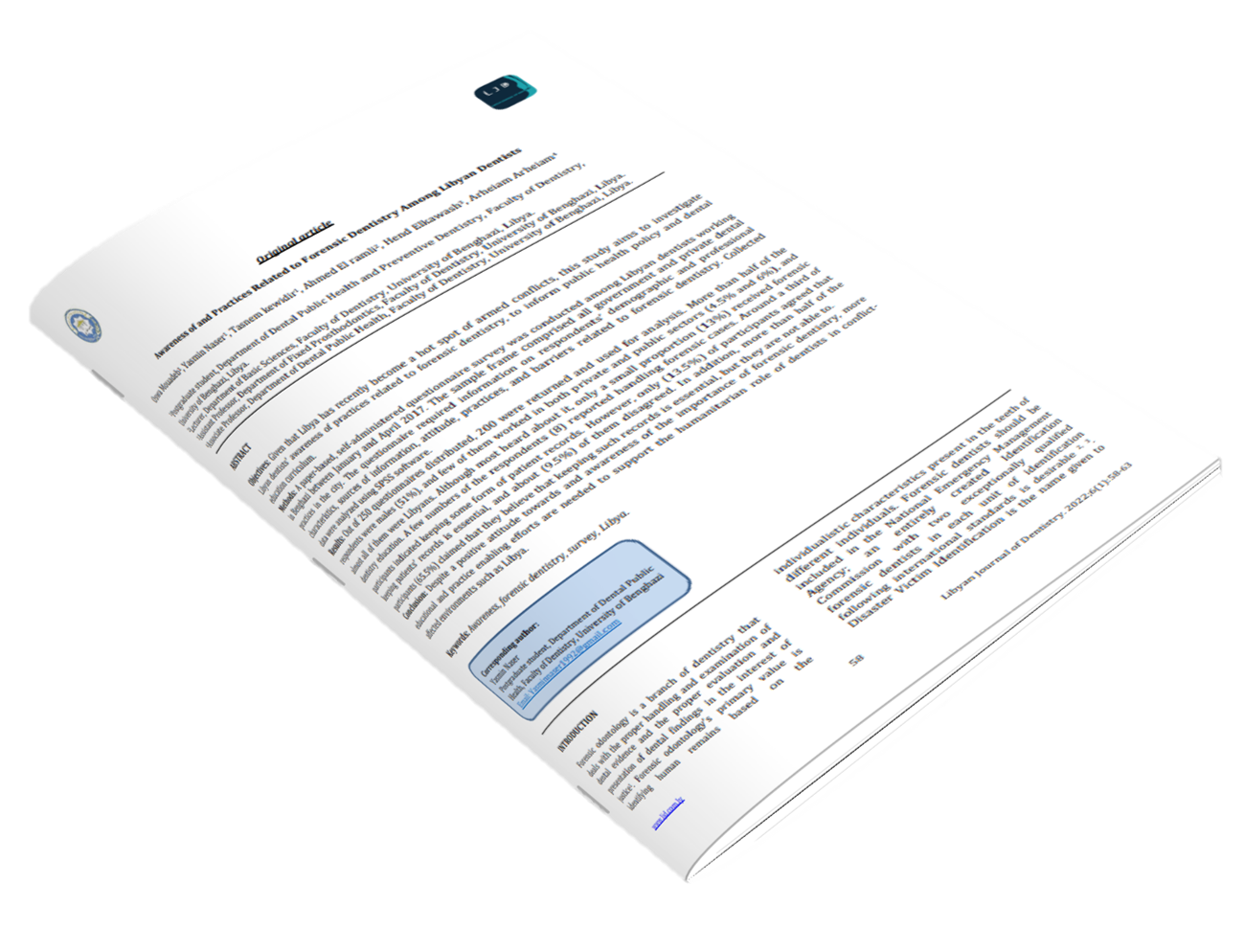Awareness of and Practices Related to Forensic Dentistry Among Libyan Dentists
DOI:
https://doi.org/10.37376/ljd.v6i1.3735Keywords:
Awareness, Forensic dentistry, Survey, LibyaAbstract
Objectives: Given that Libya has recently become a hot spot of armed conflicts, this study aims to investigate Libyan dentists’ awareness of practices related to forensic dentistry, to inform public health policy and dental education curriculum.
Methods: A paper-based, self-administered questionnaire survey was conducted among Libyan dentists working in Benghazi between January and April 2017. The sample frame comprised all government and private dental practices in the city. The questionnaire required information on respondents’ demographic and professional characteristics, sources of information, attitude, practices, and barriers related to forensic dentistry. Collected data were analyzed using SPSS software.
Results: Out of 250 questionnaires distributed, 200 were returned and used for analysis. More than half of the respondents were males (51%), and few of them worked in both private and public sectors (4.5% and 6%), and almost all of them were Libyans. Although most heard about it, only a small proportion (13%) received forensic dentistry education. A few numbers of the respondents (8) reported handling forensic cases. Around a third of participants indicated keeping some form of patient records. However, only (13.5%) of participants agreed that keeping patients’ records is essential, and about (9.5%) of them disagreed. In addition, more than half of the participants (65.5%) claimed that they believe that keeping such records is essential, but they are not able to.
Conclusion: Despite a positive attitude towards and awareness of the importance of forensic dentistry, more educational and practice enabling efforts are needed to support the humanitarian role of dentists in conflict-affected environments such as Libya.
Downloads

Downloads
Published
How to Cite
Issue
Section
License
Copyright (c) 2023 Libyan Journal of Dentistry

This work is licensed under a Creative Commons Attribution-NonCommercial-NoDerivatives 4.0 International License.







